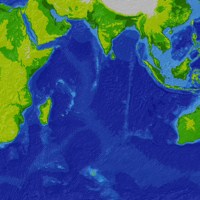In early March, India’s national security adviser announced that Mauritius and Seychelles had expressed an interest in joining the trilateral maritime security cooperation arrangement among India, Sri Lanka and the Maldives known as IO-3. Should they join, it would mean the consolidation of an Indian maritime domain awareness network in the island states of the Indian Ocean region (IOR) where India has historically had influence.
However, while these island states look to India to meet nontraditional security threats, India sees them primarily as sites for sensor chains that can monitor Chinese naval movements in the IOR. Indeed, India’s embrace of the role of “net security provider” in the region implies that it would retain the option of undertaking punitive operations against encroachments into its sphere of interest.
The inclusion of Mauritius and Seychelles in IO-3—which could subsequently be renamed IO-5—would essentially be a multilateralization of the substantive bilateral security arrangements India already has with these two countries. The Indian military is already quite engaged in training and capacity-building activities with Mauritius and Seychelles in a manner similar to what it does for Maldives and Sri Lanka. Last year, for instance, India transferred a Dornier-228 maritime surveillance aircraft to Seychelles; meanwhile Indian coast guard Dornier flights have kept overwatch of the island’s exclusive economic zone since 2011. India has also given military equipment to Mauritius, such as a patrol boat that was displayed during a joint India-Mauritius military exercise in 2013. As part of this multilateralization, Mauritius and Seychelles will become participants in the DOSTI series of coast guard exercises that currently features IO-3 partners with a focus on maritime search and rescue, marine pollution control, medical evacuation, antipiracy and boarding operations.

